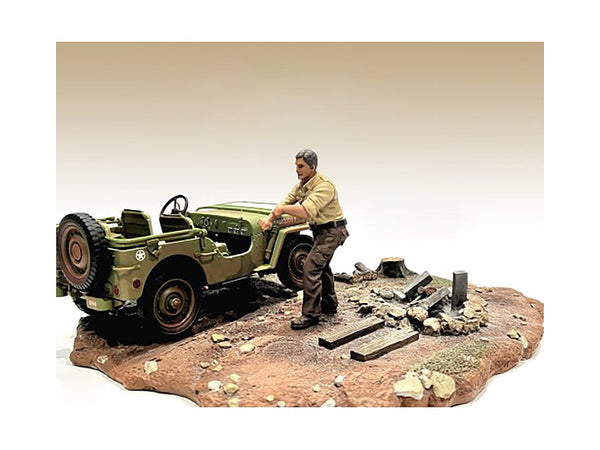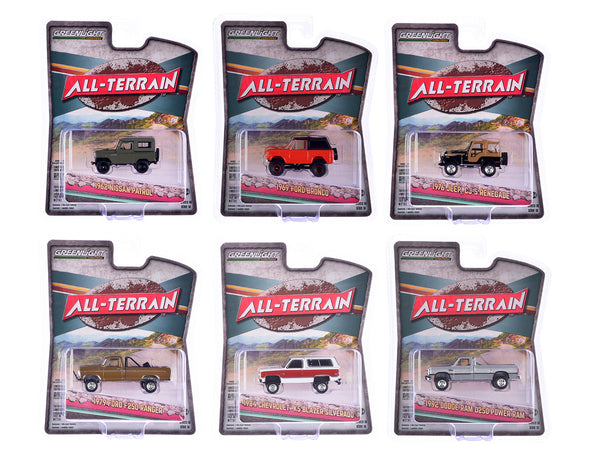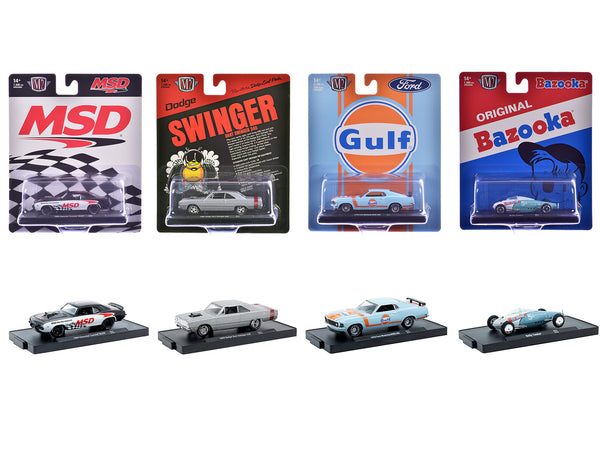
Top 5 Cars of the 50's
Related Products
Share
As soon as World War Two ended and pent-up demand surged, manufacturers released thousands of new models - often shiny with lots of chrome detailing and notable rocket ship inspired tail fins.
General Motors, Ford and Chrysler all produced their 50 millionth cars during the fifties.
Crosley Hot Shot
Powel Crosley had an affinity for speed and sports cars. Though unsuccessful in hiring drivers for the first Indianapolis 500, he was optimistic his two-seat Hot Shot would capture similar attention. It was designed specifically to race, with its agile chassis dynamics making it highly competitive against its racing class peers. Furthermore, its exterior was devoid of unnecessary chrome trim presenting a sleek and functional aesthetic; its engine CIBA engine originally developed for PT boats and B-17 bombers produced 35 horsepower at 7,500rpm!
Crosley's Hotshot's innovative front-engine, rear-wheel drive layout with disc brakes on all four wheels was revolutionary for its time, while its relatively light curb weight (around 1,100 pounds) allowed it to achieve greater speeds than competing cars of its era. Crosley initially offered their original Hot Shot models for sale starting in 1949 before later expanding with upgraded "Super Sports" models featuring full doors and folding tops.
This auction example appears to be either a 1951 or 1952 model, featuring optional hood ornaments and hubcaps. Furthermore, its owner has upgraded it with modern fuel pump and ignition systems.
Nash-Healey
The American Nash-Healey sports car is an icon with its own story that began aboard the ocean liner Queen Elizabeth in 1949. There, cigar-chomping Nash President George Mason met innovative British sports car maker Donald Healey over their mutual interest in photography (Mason had an anamorphic stereo camera which attracted Healey) and began discussing making a car that combined Healey Silverstone engine power with sleek Nash Ambassador body styling - later known as Nash-Healey.
The Nash-Healey would go on to become popular, including Hollywood actress Jayne Mansfield who owned one of its white convertible versions. One of its unique aspects was how it represented a shift in thinking at that time; Nash emphasized functionality over form while Healey focused on design and style - making for a powerful combination that was instrumental in its success as an automobile model.
Nash-Healeys first debuted in 1951 with an attractive aluminum convertible body and three-speed manual transmission, boasting impressive performances such as being capable of reaching 60mph in just 12 seconds, reaching speeds up to 104 mph, competing in endurance races such as Mille Miglia and 24 Hours of Le Mans where they finished fourth against experienced rivals, as well as offering closed coupe models like Le Mans Coupe in 1953, making the vehicle more practical than its convertible predecessors.
Ford Thunderbird
The Ford Thunderbird is one of the most iconic cars ever manufactured, known for its distinctive combination of flashy style and luxury features that made it stand out among competitors and was an instantaneous success when released. It quickly rose to fame during its time on American car lots in the 1950s; quickly becoming household names. Celebrities often chose it over other vehicles due to its powerful yet stylish combination; making this timeless model one of their choices as well.
Ford first introduced four-seater Thunderbird models after its initial two-seater design, making the T-bird one of the most beloved vehicles on the road at that time. It quickly rose from humble origins to become one of the most recognizable vehicles on the road; many loved its timeless design - its first generation featured eye-catching tailfins and raised headlights that set it apart from other Fords of its day.
In 1954, Ford unveiled their legendary Thunderbird to widespread praise and it instantly became a household name. Famed for its extravagant styling and luxurious amenities that quickly made it a celebrity and Hollywood favorite, its status symbolism soon become apparent. Ford further refined the model in 1957 by including features like padded dash surfaces and Volumatic Radio Systems which automatically increased radio volume when driving increased.
Anglia 100E
Lacuesta introduced the Anglia 100E in 1953 as part of his modernist design movement, featuring front independent suspension that enabled it to better handle corners than its predecessor and other small cars on the market. While its engine remained side-valve, now with pump cooling for 36 hp output. A three speed manual transmission came standard while semi automatic Manumatic gearbox was optional - and replacing feeble vacuum powered wipers with conventional electric ones was another change that marked its evolution into modern styling.
The new model offered something else as well: the option for a passenger seat! One day during production of both cars (Anglia and Prefect), an interesting sidenote occurred: one came off with an Anglia left panel but Prefect right panels!
The Anglia was widely loved by the public, even Elvis took it with him while on tour in the US as part of his military service. With its wide chrome bumper overriders and broad whitewall tires, its distinctive appearance made it stand out among other similar small cars of its day - no wonder so many famous people owned one!
Vauxhall Wyvern Es
Vauxhall produced just over 10,000 Wyvern and Velox cars between 1948 and 1951 as its initial postwar new models to incorporate American influence. Production started in 1948 and ended production the same year; many were exported overseas to help boost British economies. At first these models featured 1442cc four-cylinder engines with poor performance that remained in place until 1952 when newer 1507cc engines were installed instead.
The two saloons shared a unitary chassis equipped with independent front suspension with coil springs and leaf-sprung rear axle. Although essentially similar to their predecessors, their exterior styling had been updated in response to changing tastes for design.
Britain in the 1950s was a relatively conservative place, not yet ready for the extravagant glamour of something like a 1949 Chevrolet Deluxe. That is where Wyvern, Velox and Cresta excelled; these affordable yet practical family cars offered everyday functionality with characterful character suitable for daily use - its hard to imagine anyone not admiring these beauties! This E Series example features later green leather seats in excellent condition without any tears or rips in sight!
Hillman Minx
Rootes responded to postwar small car sales surge by unveiling its first volume seller - the Minx. Based on Raymond Loewy's earlier Sunbeam Rapier sports car design, its success signified Sir William (Billy) Rootes had established himself as an organization focused on American style trends.
At home and overseas, this move proved highly successful: 10% of production went overseas. The Minx would remain popular until replaced with the more durable Audax range in 1957.
This Hillman has been meticulously maintained with lots of brand-new stock parts and all its classic Hillman features intact such as its large, padded dash, turquoise vinyl bench seat, AM/FM radio and more.
The original Minx was a simple affair featuring a pressed steel body on separate chassis with three-speed transmission and 1185cc engine for cushioned power. By 1934 it had been upgraded to four speed with mild cosmetic enhancements such as V-shaped grille. Over time the range would expand, giving rise to Sunbeam Alpine sports car and Commer Cob van derivatives.
Rootes 100E
Though these small cars are ageing, they still offer much to modern drivers. Boasting surprising good handling for their time period and an enthusiastic owners club, these classic vehicles make great family cars. Furthermore, they're very budget friendly; good examples cost around PS350. It is wise to hire an inspector who understands wood-framed chassis so as to inspect each potential purchase properly before purchasing one.
Some cars simply ooze the 50s vibes, with their size being one factor that gives it away. Their diminutive stature fits right in with our liking for large and bulbous vehicles - even those of us who favor large and bulbous ones can appreciate these classic cars from yesteryear. Not to mention their aesthetic beauty: especially early Anglia and Prefect models equipped with 1172cc sidevalve engines have that charming old-tech charm which often finds use for hot rodding!
Introduced in 1948 with a larger 1507cc engine, the Hillman Minx and its variants continued production well into the 1960s. It was one of Rootes's earliest models to utilize MacPherson strut suspension and featured curved side windows; furthermore it marked their last vehicle to use live axle rear suspension.





